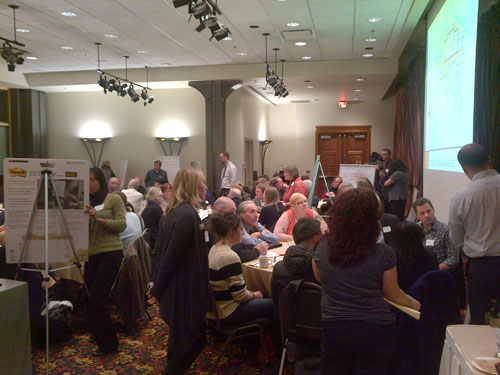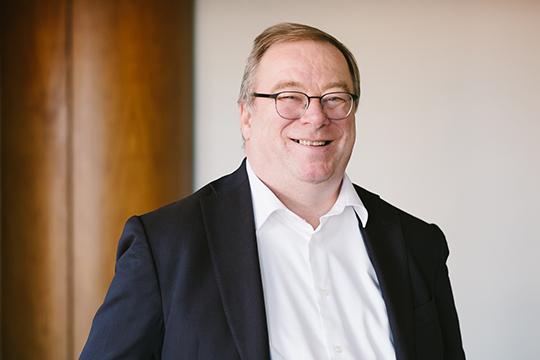Last night, the City of Calgary convened a meeting with the city's faith communities. It's an inspiring case study on how Cardus tries to achieve its mission.
Officially, the meeting's purpose was "to re-connect with our Centre City faith-based organizations and to seek further feedback on The City's Centre City Plan." That plan, adopted by City Council in 2007, calls for the doubling of residential density in the downtown core, or 40,000 additional residents in the next thirty years. But it makes no mention and considers no consequences of the 26 faith institutions which currently are part of the city's downtown, as these two Cardus studies from 2010 and 2011 noted.
 |
Municipal consultations of this sort aren't typically well-attended, so officials were enthusiastically overwhelmed, although scrambling to accommodate, the assembled crowd. The evening began with a short formal presentation which combined into twenty minutes Municipal Planning 101, 125 years of Calgary official plans, and a summary of the most current Plan. I found it telling that the last long-range plan for the city core, approved in 1966, featured three priorities for the downtown: a walking mall (Stephen Avenue); a +15 system of walkways (the series of second level bridges which connects downtown office towers); and a C-Train system (the name given to Calgary's LRT transit). Anyone familiar with Calgary today will recognize these features, highlighting that while Official Plans never accurately predict the future, they have a powerful influence in shaping it.
The rest of the time was in facilitated smaller discussion groups. The formal questions triggered stimulating conversation on a broad range of issues relating to faith and our common life together in a fast-growing city of 1.1 million. Some of it was specific—the application of parking by-laws, incorporating worship space into facilities built for other purposes, bonusing the allotment of worship space in approving development plans—and some more general. There was concern for how the marginalized might be best served in a gentrification process that seemed inevitable, recognizing that the economics of obtaining downtown space meant that churches with a longer history in the city faced different challenges than younger congregations. We spoke of how faith communities might not only serve the community but also be reflected of the community. Time was up before the conversation was done.
The results of this meeting will be compiled into an official report by Calgary municipal staff, and the process of amending official city documents to deal with the concerns raised may or may not proceed, given the vagaries of contemporary politics. But a formal report is not the real significance of last night's meeting. Seeing Calgary's city plan changed to respond to our concerns would be nice, but that isn't the measure of our mission.
Cardus' vision involves changing the public conversation. It's about putting forward research that is credible enough that even opponents have to answer the arguments raised. We try to get beyond group-think and the "safe" conversations we often have with those we agree with. It's easy to swap internal jargon and rile each other up as to how the "other guys" don't get it. It's harder to change the broader public discourse.
The issue gets more complicated when you try to speak honestly from your deepest held faith convictions. Secular orthodoxy insists that anything that sounds like faith should be privatized. Overcoming this marginalization is a long-term proposition.
In the summary provided by one participant, "It's important that the contributions of faith institutions are no longer overlooked but officially recognized by the city."
The opening question last night was, "Where were you all seven years ago?" I don't doubt that every person attending last night would have been more than welcome to say seven years ago what they said last night. Why didn't they? Some didn't know about the process. Others were present but did not have the words they use today to articulate their concerns. Some were preoccupied with the short-term issues and hadn't prioritized thinking about the future of the city and how the contribution of faith institutions needs to be articulated. Others may have just taken it for granted.
In the past few years, Cardus has convened meetings, consulted with stakeholders, commissioned research reports, contributed to the editorial pages and other media all with a view to stimulating a public conversation in Calgary. We initiated and convened a public dialogue. Last night, that conversation continued, moved forward by diverse voices of the community, many of whom have never heard of Cardus. A good many probably missed the kind shout-out that City staff gave to Cardus for its' work. It doesn't matter.
"Drawing on more than 2,000 years of Christian social thought, we work to enrich and challenge public debate through research, events and publications, for the common good"—in Calgary, and everywhere.



